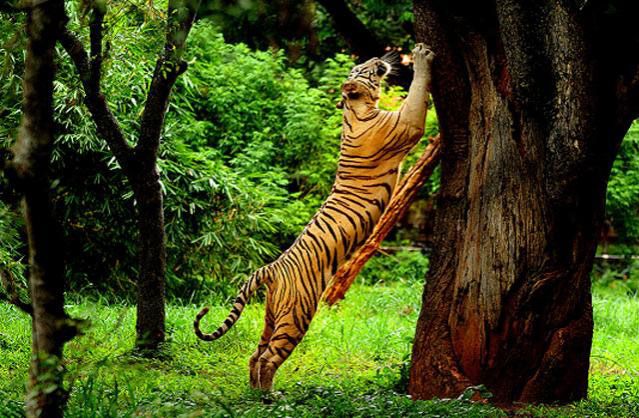In Karnataka, the ongoing conflict between humans and animals claims the life of one person per week, as reported by the forest department. These conflicts are particularly prevalent in the southern regions of the state, spanning from Bannerghatta, Chamarajanagara, Mysuru, Kodagu, and Hassan to the Chikkamagaluru belt.

Source: Times of India
Full Story:
Over the past decade, more than 600 individuals have fallen victim to attacks by wild animals, with elephants being the primary culprits, according to officials. Karnataka Chief Minister Siddaramaiah has labeled these conflicts as a significant concern for his administration.
Data shared by the forest department with PTI reveals that between 2010-11 and 2023-24 (up to March), 618 fatalities occurred due to human-animal conflicts. These include 416 deaths from elephant attacks, 38 from leopards, 36 from bears/sloth bears, 34 from tigers, and 32 from wild boars.
During his budget presentation in February, Siddaramaiah outlined measures aimed at safeguarding residents of forest-bordering areas and crops from wild animals while also protecting wildlife. In the previous budget (2023-24), Rs 100 crore was allocated for constructing railway barricades, resulting in the construction of around 78 km of barricades.
A forest officer highlighted the encroachment of weeds in forest areas, disturbing animal habitats and leading them to venture out in search of food, causing conflicts. To address this issue, proper barricades such as rail barricades, solar fencing, and elephant-proof trenches are needed along the forest boundaries.
Subhash K. Malkhede, Principal Chief Conservator of Forests (Wildlife), stressed the need for collaboration between departments to tackle human-animal conflicts effectively. He emphasized that the forest department’s efforts aim not only to conserve animals but also to protect human lives from such incidents.
The alarming frequency of human-animal conflicts in Karnataka underscores the pressing need for coordinated efforts to mitigate these incidents. With more than 600 lives lost over the past decade, primarily to elephant attacks, it is evident that urgent action is required. While measures such as constructing railway barricades have been implemented, addressing the root causes of these conflicts, such as habitat disturbance and encroachment, remains paramount.

Source: Indian Holiday
Collaboration between departments, along with community engagement and conservation efforts, is essential to ensure the safety of both humans and wildlife in Karnataka’s forested areas. By working together, we can strive towards a future where human-animal conflicts are minimized, and harmony between humans and wildlife is achieved.
Read Also:
Opposition By Wildlife Activists Against Constructions In ESZ of Bandipur Tiger Reserve



















































































